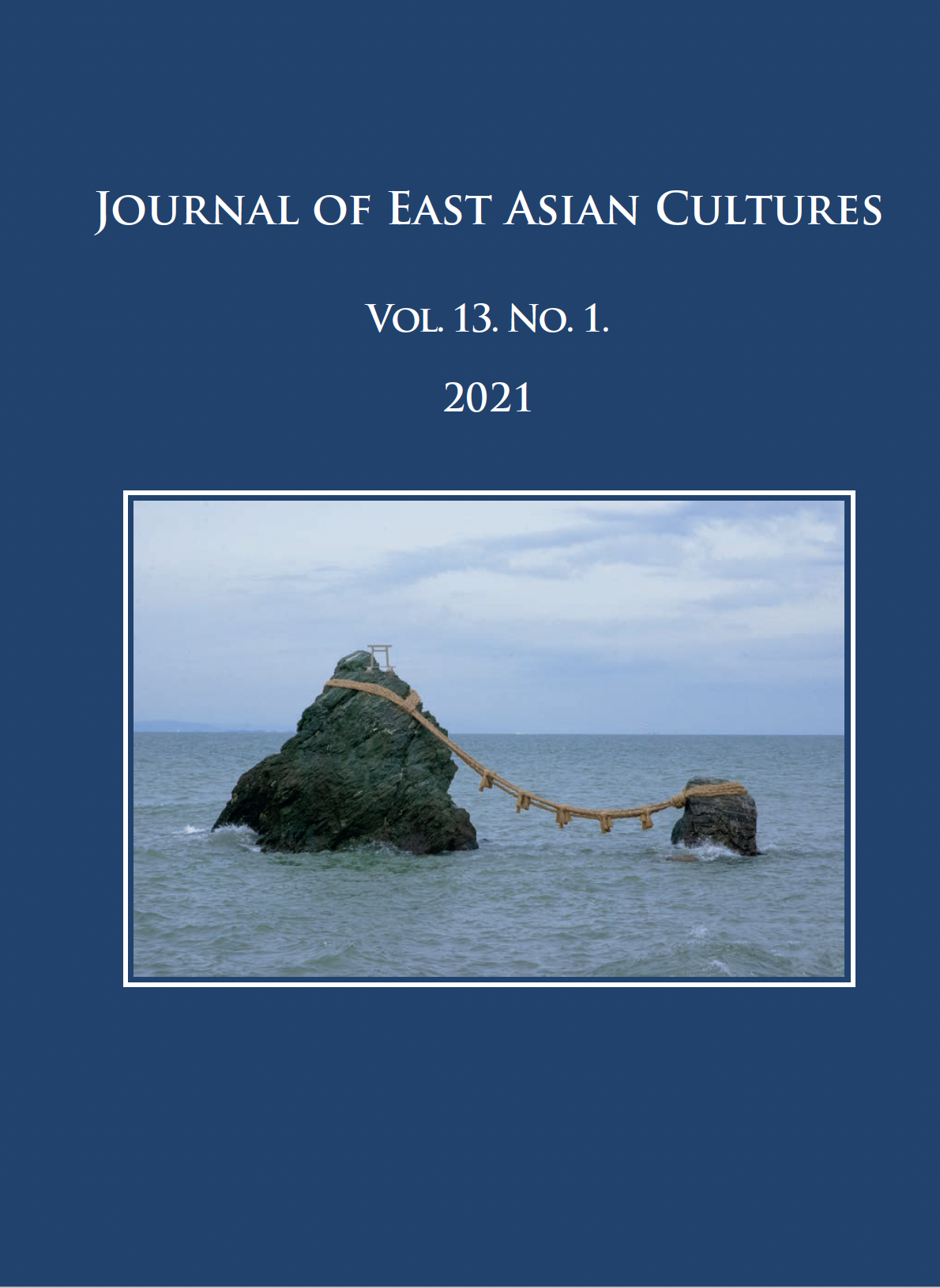The Role of Family in Modern China: A Blended Compressed Transformation of the Private and Public Spheres
Published 2021-12-15
Keywords
- Compressed modernity,
- private sphere,
- public sphere,
- collectivism,
- marketisation
- family policy ...More
How to Cite
Copyright (c) 2021 the author(s)

This work is licensed under a Creative Commons Attribution-NonCommercial 4.0 International License.
Abstract
Following the Maoist period (1949–1976), which stressed workplace relations over family ties and the post-Mao era, which restored the family as an important social unit, the family in contemporary China suggests a blended picture of both pre-modern, modern and post-modern characteristics. For instance, the increasing intergenerational relationship accompanied by strong filial piety shows a quasi-return to pre-modern conditions, whereas the freedom of mateselection rather reveals a modern characteristic of Chinese families today. In contrast, China’s current low total fertility rate shows a post-modern feature of the family, albeit as a result of direct state intervention in the private sphere. This blended and compressed characteristic can also be seen in the ambiguous transformation of the private (family) and ‘public’ (defined here as ‘non-private’, such as political, economic and civil society) spheres. However, it can be argued that contemporary China, which offers new perspectives to social sciences for a better understanding of the different paths of modernisation in general, is being characterised by a sort of new modern familism where the family continues to play an essential role in social responsibility and sustainability.
References
- Chai, Yanwei. 2014. “From Socialist Danwei to New Danwei: A Daily-Life-Based Framework for Sustainable Development in Urban China.” Asian Geographer 31.2: 183–190. https://doi.org/10.1080/10225706.2014.942948
- Christensen, Karen S. – Levinson, David (eds.) 2003. Encyclopedia of Community: From the Village to the Virtual World, Volume 1st. Thousand Oaks, London, New Delhi: Sage Publications, Inc.
- Christiansen, Flemming – Zhang, Junzuo 1998. “Introduction: The Village Revisited.” In: Flemming Christiansen – Zhang Junzuo (eds.) Village Inc.: Chinese Rural Society in the 1990s. Honolulu: University of Hawaii Press, 1–21.
- Davis, Deborah 2019. “Re-Verticalizing Urban Kinship.” Paper presented at the SASS World Forum on China Studies, Panel on Family Structure and Relationships, Shanghai, China, September 11. https://doi.org/10.1525/california/9780520077973.003.0001
- Davis, Deborah – Harrell, Stevan 1993. “Introduction: The Impact of Post-Mao Reforms on Family Life.” In: Deborah Davis – Stevan Harrell (eds.) Chinese Families in the Post-Mao Era. Berkeley: University of California Press, 1–22.
- Dikötter, Frank 2010. Mao’s Great Famine: The History of China’s Most Devastating Catastrophe, 1958–1962. New York, London, Oxford, New Delhi, Sydney: Walker & Co.
- Feng, Chuan – Nelson, Leyton P. – Simon, Thomas W. 2016. China’s Changing Legal System: Lawyers & Judges on Civil & Criminal Law. Houndmills, Basingstoke, Hampshire; New York, NY: Palgrave Macmillan.
- Greenhalgh, Susan 2005. “Missile Science, Population Science: The Origins of China’s One-Child Policy.” The China Quarterly 182: 253–276. https://doi.org/10.1017/S0305741005000184
- Haerpfer, Christian et al. (eds.) 2020. World Values Survey: Round Seven – Country-Pooled Datafile. Madrid, Vienna: JD Systems Institute & WVSA Secretariat. https://doi.org/10.14281/18241.1
- Horváth Attila 2008. “A szovjet család- és házassági jog” [The Soviet family and marriage law]. Iustum Aequum Salutare 4.3: 55–63.
- Inglehart, Ronald et al. (eds.) 2020. World Values Survey: All Rounds – Country-Pooled Datafile. Madrid, Vienna: JD Systems Institute & WVSA Secretariat [Version: http://www.worldvaluessurvey.org/WVSDocumentationWVL.jsp].
- Liu, Li 2008. “Filial Piety, Guanxi, Loyalty, and Money: Trust in China.” In: Ivana Marková – Alex Gillespie (eds.) Trust and Distrust: Sociocultural Perspectives. Charlotte, NC: Information Age Publishing, Inc., 51–77.
- Macrotrends. China Life Expectancy 1950–2020, https://www.macrotrends.net/countries/CHN/china/life-expectancy (accessed: 20.02.2020).
- Qu Haibo 曲海波 1987. “Xin Zhongguo renkou lilun yanjiu licheng shuping” 新中国人口理论研究历程述评 [A review of the development of population theory studies in new China]. Renkou yanjiu 人口研究 11.2: 36–41.
- Qu Haibo 曲海波 1988. “Shilun woguo renkouxue yanjiu duixiang de queding ji xueke tixi de jianli” 试论我国人口学研究对象的确定及学科体系的建立 [A discussion on demography as a subject of research and its introduction into the academic system in China]. Renkou yanjiu 人口研究 12.3: 8–13.
- Somlai Péter 1990. “A szabad szerelemtől az ellenőrzött magánéletig. Családpolitika a Szovjetunióban 1917 után” [From free love to controlled privacy. Family policy in the Soviet Union after 1917]. Társadalmi Szemle 45.6: 25–40.
- Tian, Felicia F. – Davis, Deborah S. 2019. “Reinstating the Family: Intergenerational Influence on Assortative Mating in China.” Chinese Sociological Review 51.4: 337–364. https://doi.org/10.1080/21620555.2019.1632701
- Wang, Feng – Cai, Yong – Gu, Baochang 2012. “Population, Policy, and Politics: How Will History Judge China’s One-Child Policy?” Population and Development Review 38 (Supplement): 115–129. https://doi.org/10.1111/j.1728-4457.2013.00555.x
- Wang, Jiawen – Weisfeld, Carol C. 2018. “The Changing Family in China.” In: Carol C. Weisfeld – Glenn E. Weisfeld – Lisa M. Dillon (eds.) The Psychology of Marriage: An Evolutionary and Cross-Cultural View. Lanham, MD: Lexington Books, 107–124.
- Wang, Yuesheng 2014. “An Analysis of Changes in the Chinese Family Structure between Urban and Rural Areas: On the Basis of the 2010 National Census Data.” Social Sciences in China 35.4: 100–116. https://doi.org/10.1080/02529203.2014.968349
- Wu Xiaoying 吴小英 2016. “《Qujiatinghua》haishi《jiatinghua》: jiating lunzheng beihou de《zhengzhi zhengque》”《去家庭化》还是《家庭化》:家庭论争背后的《政治正确》[“Defamilialisation” or “familialisation”[?]: “political correctness” behind family debates]. Hebei xuekan 河北学刊 36.5: 172–178.
- World Values Survey (WVS). Online survey database, accessed 2020.
- Xia, Yan R. – Zhou, Zhi G. 2003. “The Transition of Courtship, Mate Selection, and Marriage in China.” In: Raeann R. Hamon – Bron B. Ingoldsby (eds.) Mate Selection Across Cultures. Thousand Oaks, London, New Delhi: Sage Publications, Inc., 231–246. https://doi.org/10.4135/9781452204628.n13
- Xu, Anqi – Xue, Yali 2016. “Family Structure.” In: Xu Anqi – John DeFrain – Liu Wenrong (eds.) The Chinese Family Today. London and New York: Routledge, 14–58. https://doi.org/10.4324/9781315642611

